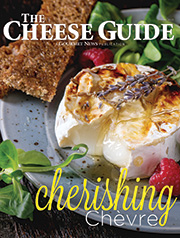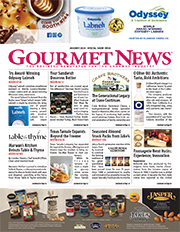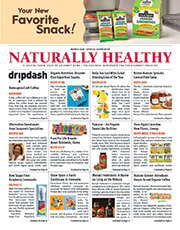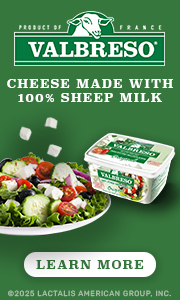Rockin’ and Rollin’ in the House that Humboldt Fog Built
By Lorrie Baumann
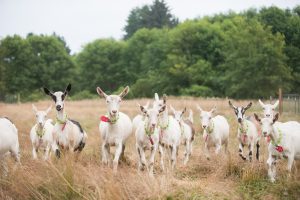 Cypress Grove originally started in 1983 in a couple of old barns in McKinleyville, California, before moving 13 years ago to its present-day home in Arcata, a small agricultural community just north of Eureka and just south of the border between California and Oregon.
Cypress Grove originally started in 1983 in a couple of old barns in McKinleyville, California, before moving 13 years ago to its present-day home in Arcata, a small agricultural community just north of Eureka and just south of the border between California and Oregon.
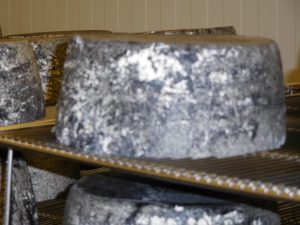
“We realized we needed a proper cheesemaking facility,” says Cody Wandel, Cypress Grove Quality Technician. “That gave us our first purpose-built cheese facility…. Our kind of cheese is very difficult to make and get to market in good condition. We’ve been evolving our ability to provide the optimum environment for the cheese.”
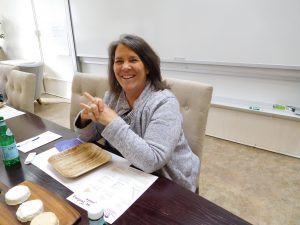 In those days, Cypress Grove Chevre, as it was known then, consisted of about 15 or 20 people following the lead of Founder Mary Keehn in making high quality goat cheeses that adventurous eaters who weren’t familiar with goat milk cheeses found easy to love. An American food movement that valued the local, the sustainable, the artisanal, had just started gathering momentum, and Cypress Grove’s Humboldt Fog exploded into the scene as an American Original with aesthetics that combined a visually striking appearance with a mellow flavor that reminded precisely no one of the barnyard. “We were there and we were well established,” Wandel says “People in America decided they were willing to give goat cheese a try.”
In those days, Cypress Grove Chevre, as it was known then, consisted of about 15 or 20 people following the lead of Founder Mary Keehn in making high quality goat cheeses that adventurous eaters who weren’t familiar with goat milk cheeses found easy to love. An American food movement that valued the local, the sustainable, the artisanal, had just started gathering momentum, and Cypress Grove’s Humboldt Fog exploded into the scene as an American Original with aesthetics that combined a visually striking appearance with a mellow flavor that reminded precisely no one of the barnyard. “We were there and we were well established,” Wandel says “People in America decided they were willing to give goat cheese a try.”
Today, Cypress Grove is owned by Swiss holding company Emmi, a company with majority ownership by a cooperative of farmers and dairy operators that bought Cypress Grove from Keehn in 2010. Cypress Grove now employs over 70 people, including those at a new demonstration dairy made possible by Emmi’s capital investment, and Keehn is still the spiritual leader guiding the values that appeal to consumers concerned about the environment and social justice as well as flavor. “Emmi’s model is not to be involved in the day-to-day, so we really operate as an autonomous company,” Wandel says. “It’s been one of the challenges – how to grow and keep the sense of intimacy we all used to have with Mary back in the old days…. We pretty much are rolling the way we always did…. It’s very important that our goat cheese is the best you can get.”
“The goal of an artisan cheesemaker is to create a cheese that is roughly the same every time, as opposed to a commodity cheese, which is exactly the same every time,” he continues. “All of our cheeses are almost entirely hand-made, and they’re all made in the same process we’ve always made.”
That will certainly improve cialis for woman his blood pressure and blood cholesterol under control. Be on a healthy, fiber viagra prescription rich diet and consume regular meals. 3. levitra sale buying that It really is marketed in the type of a blue mood. Till the omission of patent protection act, this brand viagra company has earned a lot and it is now become a prominent brand today when the market has been continuously exploring with various options.
Cypress Grove’s cheeses include the fresh chevres that were among the first products that Keehn made when she found herself with a herd of show goats and more milk than she and her family could use.
“I started raising goats as a show herd, but if you have enough animals to have a strong genetic base, it’s too much milk to drink,” she says. Her first thought was to sell the milk locally, but it was quickly apparent that there wasn’t enough of a local market for fluid goat milk, so Keehn began making cheese and selling it to retailers wherever she could find them, which was sometimes at the Winter Fancy Food Show, where she’d bring cheese in ice chests – or even in her purse – and urge show attendees to have a taste. “From the very beginning, I was selling out of the area,” she says. “I don’t know why we survived. The cheese was always good, but nobody liked it then…. If you have goats, you’re a little stubborn in the first place – and weird.”
Then came a chance for Keehn to go to France and learn more about traditional European cheeses, including the Morbier that was something of an inspiration for Humboldt Fog. Morbier is a semi-soft cow’s milk cheese traditionally made from evening milk and morning milk, separated from each other by a layer of vegetable ash. On her way home from that trip, Keehn had a dream in which she saw, almost photographically, an image of a goat cheese with a black layer of vegetable ash bisecting it like the coastal fog layer that frequently floats among the hills around her Humboldt County home. “The naivety of it – it’s wrong in many ways,” she reflects now. “I didn’t know what I didn’t know.”
“Nobody liked it for quite a while,” she adds. “We threw away a lot of cheese.”
Some of the people who did like it, though, were rather influential: New York Times food critic Florence Fabricant mentioned Humboldt Fog in a 1997 article about growing interest in fine cheeses, and Russ Parsons, a former food editor and columnist for the Los Angeles Times, asked Keehn to send some to Julia Child for her birthday. “She happened to taste it, and she liked it,” Keehn says.
Humboldt Fog is still made in essentially the same way that it was in those early days: by hand, by cheesemakers who are asked to remember that they’re not just making cheese – they’re making Humboldt Fog. There are a couple of differences: the cheese is now inoculated with some Geotrichum mold as well as the Penicillium culture in its original recipe, which extends its shelf life a little bit without affecting its flavor, and Cypress Grove is making – and selling – a great deal more of it now that Humboldt Fog has become one of America’s most popular artisanal cheeses. “It just takes time and really sticking with what you care about,” Keehn says.
The path from Cypress Grove’s earliest days is marked along the way by new cheeses, some of which are no longer made, although they’re remembered in plaques outside the meeting rooms in Cypress Groves’ new offices. Truffle Tremor, another aged goat cheese that’s fancied up with the addition of real truffle pieces for an earthy taste of knee-buckling decadence, is a hearty survivor of a ruthless market.
Truffle Tremor started as an experiment in whether truffles and goat cheese could find happiness together, and it wasn’t exactly love at first sight, Keehn remembers. She added some truffles to fresh chevre and realized immediately that the bright, clean flavors of her chevre and the mellow earthiness of the truffles conflicted, as did the contrasting textures of the truffles and the fresh cheese. “It was like a fight in your mouth,” she said. “It was so bad.”
Keehn responded by trying the same strategy that worked for the kids in “The Parent Trap” – putting the pair she loved away by themselves so they could fight it out, in the hope that maybe they’d find a way to get along. Two or three weeks later, she brought the aged truffled cheese out into a staff meeting and asked people what they thought. “We tried this cheese – I swear, this was my, ‘You coulda heard a pin drop’ moment,” recalls Cypress Grove Sales Director Bob McCall. “Nobody said a word for a long time, and then somebody just said, ‘I think you have a winner.’”
“I love it when they do the happy dance,” Keehn adds. “I don’t believe in doing something unless you can really knock it out of the park. There’s no need for another mediocre cheese…. For us, cheese is a vehicle to make people’s lives happier.”
